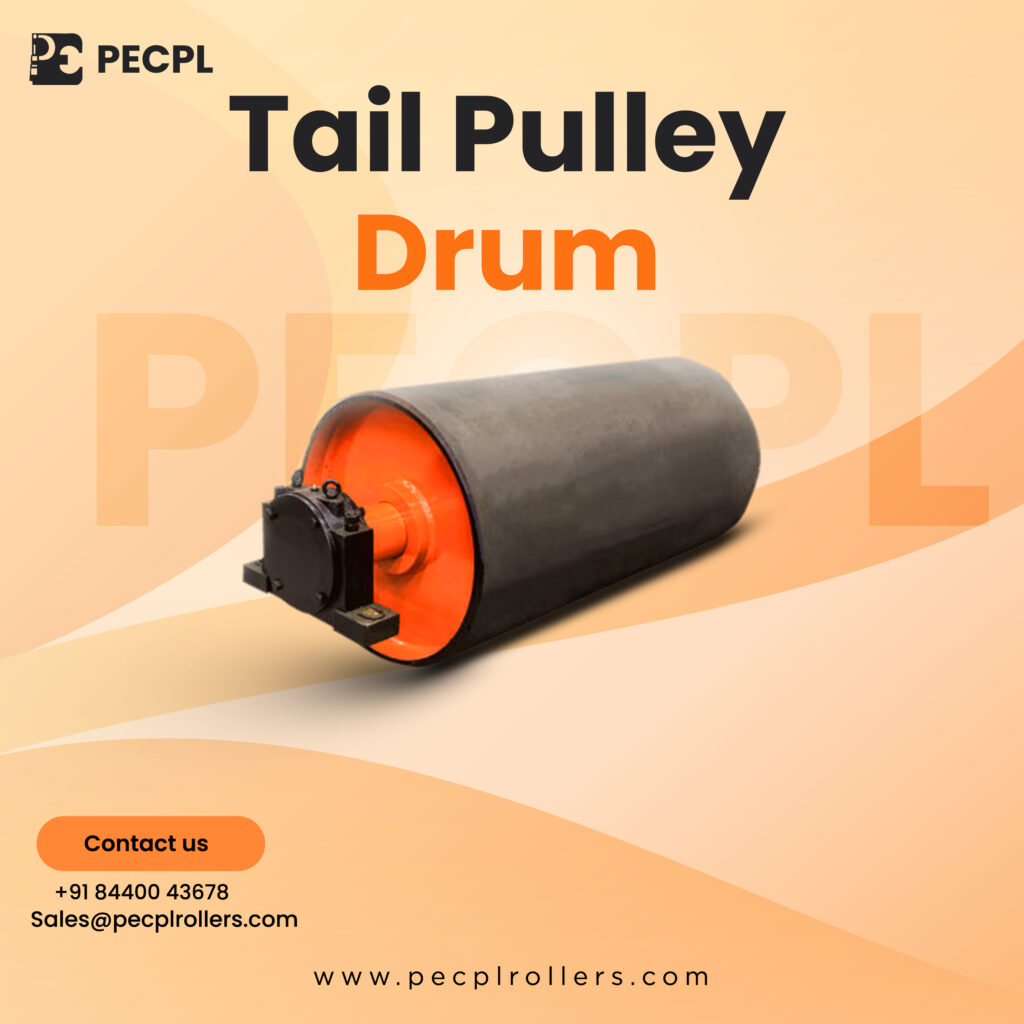
The tail pulley is an essential component of conveyor systems. It is located at the opposite end of the conveyor belt from the head pulley and is responsible for providing tension to the belt. The primary function of the tail pulley is to redirect the belt and ensure smooth movement of materials. It works in conjunction with the head pulley to create a continuous loop for conveying items. The tail pulley is usually smaller in diameter compared to the head pulley, and it is designed to withstand high tension and heavy loads. It is typically made of durable materials such as steel or rubber. The tail pulley is mounted on a shaft and rotates as the belt moves. This rotation helps to maintain proper tension in the belt and prevents slippage. The tail pulley, along with other pulleys in the system, plays a crucial role in ensuring efficient and reliable operation of the conveyor. Regular maintenance and inspection of the tail pulley are important to identify any signs of wear or damage and address them promptly. In conclusion, the tail pulley is an integral part of conveyor systems, serving to redirect the belt and maintain tension for efficient material transportation.
The tail pulley is an essential component of conveyor systems, providing the necessary tension and support to ensure smooth and efficient operation. In this post, we will explore the various aspects of tail pulleys, including their role, types, installation, and maintenance. Whether you are a conveyor system operator or simply curious about the workings of this mechanical device, this comprehensive guide will provide you with all the information you need to know.
1. What is a tail pulley?
A tail pulley is a specialized pulley located at the opposite end of the conveyor belt from the drive pulley. It is responsible for providing tension to the belt and maintaining its alignment. The tail pulley is typically positioned at the tail end of the conveyor system and is connected to the conveyor frame, allowing it to rotate freely.
2. What are the types of tail pulleys?
a. Standard tail pulley: This type of tail pulley features a cylindrical shape and is commonly used in various industries.
b. Spiral wing tail pulley: Designed to improve belt tracking, the spiral wing tail pulley has spiral-shaped wings that help guide the belt back onto its intended path.
c. Self-cleaning tail pulley: Equipped with a series of brushes or blades, this type of tail pulley helps remove debris and prevent material buildup on the belt.
3. How is a tail pulley installed?
a. Positioning: The tail pulley should be installed at the appropriate distance from the drive pulley to ensure proper tensioning of the belt.
b. Alignment: It is crucial to align the tail pulley with the drive pulley to maintain belt tracking and prevent unnecessary wear and tear.
c. Tensioning: The tail pulley should be adjusted to provide optimal tension to the belt, allowing for smooth operation and preventing slippage.
4. What are the maintenance requirements for a tail pulley?
a. Regular inspections: Routine visual inspections should be conducted to check for any signs of wear, damage, or material buildup on the tail pulley.
b. Cleaning: If debris or material buildup is observed, the tail pulley should be cleaned using appropriate tools or methods to ensure its smooth rotation.
c. Lubrication: Some tail pulleys may require periodic lubrication to reduce friction and maintain optimal performance.
Conclusion
The tail pulley plays a crucial role in the smooth operation of conveyor systems, providing tension and support to the belt. By understanding the different types of tail pulleys, their installation requirements, and the importance of regular maintenance, operators can ensure the longevity and efficiency of their conveyor systems. With proper care and attention, the tail pulley will continue to contribute to the seamless movement of materials, enabling various industries to operate efficiently.
